
Starting with The Return of Jafar in 1994 and finishing (for now) with The Little Mermaid: Ariel’s Beginning in 2008, Disney released an absolute shitload of direct-to-video sequels to many of the films in its canon. Unlike The Rescuers Down Under and Fantasia 2000, almost all of these sequels were low budget and low effort. It’s sadly notable when one of the D2V sequels was actually good instead of absolute goddamn trash. They were simply meant to make a quick buck off of young children who really didn’t know better. The result was, however, that along with the poor reception of films released during the Second Dark Age, Disney’s reputation as a producer of quality family entertainment was taking a serious hit. After a merger with Pixar Animation, executives put a halt to any further sequels that were in early production stages. (But not counting the Tinker Bell movies, I guess?)
I will not be listing all of the D2V sequels here chronologically like I do with the canon eras, but simply adding them as I watch them. The exception is if there are multiple sequels to the same movie – I will group those reviews together. And yes, this is gonna suck.
JUMP TO:
The Hunchback of Notre Dame II | Pocahontas II: Journey to a New World | Lilo & Stitch 2: Stitch Has A Glitch | Stitch! The Movie | Leroy & Stitch | The Return of Jafar | Aladdin and the King of Thieves | The Lion King 2: Simba’s Pride | Lady and the Tramp II: Scamp’s Adventure | The Little Mermaid II: Return to the Sea | The Little Mermaid: Ariel’s Beginning | Mulan II | Beauty and the Beast: The Enchanted Christmas | Beauty and the Beast: Belle’s Magical World | Return to Never Land | Cinderella II: Dreams Come True | Cinderella III: A Twist In Time | 101 Dalmatians II: Patch’s London Adventure | Bambi II | The Fox and the Hound 2
Well, for starters, this thing shouldn’t exist. Disney’s changes to the Hunchback of Notre Dame story are notorious – a happy ending rather than Victor Hugo’s extensive suicide-inducing tragic style. But, whatever. That’s the least of this film’s problems. It is barely over an hour long, but HBoNDII is torturous to watch. The basic story is that Quasi is sad cause he can’t get laid, and enter Madeleine, voiced by Jennifer Love Hewitt, who, he falls in creepy love with at first sight and a whole bunch of metaphors with the subtlety of an anvil falling off Mt. Everest ensue. For whatever reason, most of the original voice cast returned for this, not counting Tony Jay (for obvious reasons) but now including prepubescent Haley Joel Osment who plays the cloyingly precocious offspring of Esmeralda and Phoebus. And…yeah. Don’t watch this. You have so much of your life to give.
THE BEST:
- The score is way too good for this film. The only part of the film I actually enjoyed was the first minute or so, which was just watching some pigeons fly around Paris with this swelling orchestrated music worthy of a great epic film but is somehow in a Disney sequel. The songs absolutely suck (forgettable at best, annoying at worst) so the score was basically saving my sanity. I hope the composer (Carl Johnson) has gotten better work than this shitfest, but his IMDB page is basically empty. Maybe “Worked on The Hunchback of Notre Dame II” isn’t the greatest thing to have on a resume.
THE WORST:
- Literally everything else. I will explain how I can make such a sweeping statement. Think of everything great about The Hunchback of Notre Dame. The beauty of the animation, the music, the villain, the moral messages, the dark themes, the climax, Quasi’s bittersweet love for Esmeralda, and the inclusion of Notre Dame as a “character” in the story. Now imagine all of that missing from its sequel, and everything horrible (the gargoyles, gargoyles, and gargoyles) emphasized in its place. This film absolutely looks like shit – cheap drab colours with no proper shading, everyone’s off model, the movements are stiff, the characters’ expressions awkward. As I mentioned above, the music (minus the score) blows. “Quasi’s fa-la-la-la-la-falling in looooove!” (Yes, really) The villain is just a pile of cliches with none of Frollo’s inner torment or murderous lust – he’s just a vain asshole who likes to steal shit. The moral messages can be summed up with how the bell La Fidele is described as beautiful on the inside. CHRIST, DISNEY. LAY IT ON WITH A BULLDOZER, WHY DON’T YA? The dark themes…well, there’s none of that here. The darkest thing is that Madeleine has to betray Quasimodo to save him and *snore* The climax is just…the stupid kid gets kidnapped and Madeleine does a tightrope walk to save him and *snore* Quasi’s love for Madeleine is super goddamn creepy – literally 5 minutes after he’s met her for the first time, he’s carved a doll of her, posing it with a doll of himself, and was singing a song about her maybe miraculously falling in love with him. And as for Notre Dame itself, it’s barely even included beyond Quasi’s home in the bell tower, and even that is basically confined to the stuff that doesn’t require detailed animation. And yes, the friggin’ gargoyles are in the film more than Esmeralda and Phoebus are. I hate those gargoyles oh my god. OH! And I forgot one of the worst things. Madeleine can see the gargoyles move and hear them talk too…because she has an imagination. *facepalm*
See Also: The Hunchback of Notre Dame
So we know that the original Pocahontas didn’t even try to be historically accurate. And yet, someone got the idea that maybe they should do a sequel in which Pocahontas does not end up with John Smith, but her historical husband, John Rolfe. I notice Disney left out that little historical fact that Pocahontas died at age 21 and that when she married she changed her name to “Rebecca Rolfe.” But I digress. This is one of the sillier D2DVD sequels, in that there’s an entire song about how wacky London is…and yet there’s an entire plot about how Governor Radcliffe basically wants to commit genocide on Pocahontas’ people. Fun for the whole family!
THE BEST:
- Most of the songs in the movie are terrible, including the duet at the end. Did you all know Billy Zane can (sorta) sing? Who knew? But Pocahontas’ big solo Where Do I Go From Here? is quite pretty and is bombastic enough that it could have been in one of the Disney canon films. Judy Kuhn sure has some pipes on her. The sequence is one of the better animated ones as well, which…isn’t saying much, but credit where credit is due and so on. And it does nicely fit into the “I Want” category of musical songs. Though I guess it’s more “I Don’t Know What I Want.”
THE WORST:
- The, uh, very, very optimistic ending about how Pocahontas and Rolfe’s marriage is going to build so many bridges and bring people together and there will be lasting peace and yadda yadda yadda MILLIONS OF INNOCENT PEOPLE DIED, DISNEY. Like, Disney were already playing with fire by trying to adapt the whole Pocahontas story while dancing around the genocide that was about to happen. This sort of thing is just irresponsible. I know it’s a cheap-o cash-in movie just meant to babysit the kids for a while, but there’s a difference between a happy ending and an offensively naive one. I can try to pretend that since there wasn’t any attempt to be historically accurate, the Disney Pocahontas exists in a parallel universe where Native Americans weren’t massacred.. But no. Not gonna buy that. Bad Disney! Go to your room!
See Also: Pocahontas
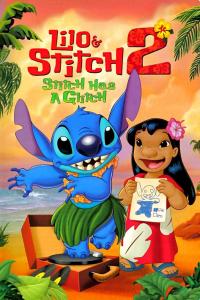 Lilo & Stitch 2: Stitch Has A Glitch (2005)
Lilo & Stitch 2: Stitch Has A Glitch (2005)
I wasn’t expecting to review this so soon after I’d covered its predecessor, but my sister wanted to watch it, so… *shrug* Now, the weird thing about this sequel is that it was the SECOND sequel to come out, Stitch! The Movie having come out beforehand. I guess this one counted as the “true” sequel because STM was just meant as a setup for the TV series, much like how The Return of Jafar was a setup for the Aladdin TV series. (Though S!TM was WAY more blatant about it) Anyway, the plot is that Stitch is semi-retconned back to being a bad little monster because his molecular structure wasn’t fully charged or some technobabble along those lines. As usual, the animation was done by DisneyToons studios rather than WDAS so the animation quality is visibly low budget, but not awful.
THE BEST:
- Although this film doesn’t have nearly the emotional impact that the first one did (more on that in a minute), I really did feel for Stitch. He starts the film having a nightmare that he’s become bad again and has physically attacked Lilo, which establishes right from the beginning how far his character has come. And for a creature who doesn’t/can’t speak much, he emotes really well about how scared the “glitchiness” and uncontrollable bad behaviour makes him. He knows that something is very wrong, but he’s more scared about hurting Lilo than he is about dying. And, gross-out humour aside, I love the little montage of Stitch doing good deeds to prove that his good/bad balance isn’t as low as Lilo says it has become. So yeah, this was both a cute and a well-developed character arc for Stitch.
THE WORST:
- In the first film, the B-plot’s emotional conflict is that Nani isn’t ready to care for Lilo, and is in very real danger of losing her to social services. In this film, the B-plot is that Lilo wants to win a hula competition because her mother did when she was her age. Not exactly a comparable emotional conflict! And this isn’t even a high-stakes hula competition, it’s literally just a tiny one held in her neighbourhood with only those 4 other brats in her class to compete with. Considering how emotionally heavy the first film’s conflict was, this is just a total letdown by comparison. When I think of Lilo & Stitch, one of the first scenes I remember is Nani singing Aloha Oe to Lilo as a heartwrenching goodbye. There’s nothing even close to that here. Almost all of the emotional elements of the plot are used in the last scene, which might have had more effect on me if the ending wasn’t incredibly predictable. Lilo is doing a hula in which the moral is “Love is stronger than death.” GEE, I WONDER WHAT’S GOING TO HAPPEN?
See also: Lilo & Stitch, Stitch! The Movie, Leroy and Stitch
Stitch! The Movie (2003)
Although Stitch! The Movie was released before Lilo & Stitch 2: Stitch Has A Glitch, I’m grouping it with Leroy & Stitch because these two films are directly related to the spinoff TV series Lilo & Stitch: The Series rather than being sequels to the original film. This is a backdoor pilot for the TV series, with the premise that Jumba’s other 625 experiments have been kept in dehydrated storage, got scattered all over Kauai, and Our Heroes have to find these experiments before they destroy the universe or something. I remember very little about the TV series beyond the sheer number of drag queen jokes about Pleakley. Incidentally, the strange title is because the TV series was originally going to be called Stitch! but the creators changed their minds somewhere between the release of this feature-length pilot and the beginning of the series.
THE BEST:
- I grew up in an era where the premises of the TV spinoffs of the Disney canon movies were either so open-ended they were boring (What was Ariel‘s life like before she met Eric? What happened to Aladdin and Jasmine after they got together?) or baffling (What if the characters of The Jungle Book lived in the 1930s and ran an air freight cargo business?). So the premise of exploring what the other 625 experiments were, linking it to the original film’s theme of “ohana,” and giving the original protagonists an ongoing quest (rather than self-contained episodic plots), made perfect sense and worked really well. In a lot of ways, it reminds me of Cardcaptor Sakura – a collection of items mistakenly get released/lost & they scatter everywhere, one by one they get activated and create havoc, and each item has a particular talent, power, or ability. I know I’m kind of reviewing the TV series rather than just this film, but it and Leroy & Stitch are literally just long TV episodes.
THE WORST:
- With the original film, I listed “the characters” as what I considered to be the ‘Best’ thing about it. Unfortunately, I cannot say the same thing for the characters introduced for the spinoff series. Dr. Jacques von Hämsterviel, the series’ antagonist, is desperately annoying. He’s screaming the entire time he talks (at a high pitch, too), and his manner of speaking seems to be a ripoff (or at best a weak homage) of the French knight from Monty Python and the Holy Grail. I suspect it’s “weak homage” because of the “Your mother was a hamster” line. I know I’m supposed to boo the villain, but every time Hämsterviel had a scene, I couldn’t wait until it was over. I also have to wonder how Jeff Bennett didn’t blow out his vocal chords by voicing a character with such an acerbic voice.
See Also: Lilo & Stitch, Lilo & Stitch 2: Stitch Has A Glitch, Leroy and Stitch
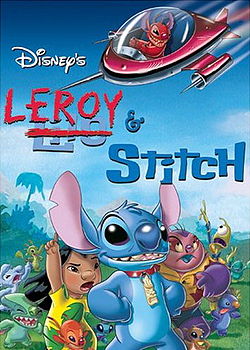
Leroy & Stitch (2006)
Much like how the two Aladdin sequels bookended the spinoff TV series, Leroy & Stitch served as a grand finale for the TV series. Considering it had only 65 episodes, I have to wonder if the kids were annoyed that they didn’t get to see all 626 experiments before being told at the beginning of the movie that Lilo & her adopted alien family already caught and tamed them all. (What is it with Disney insisting that all of their TV series, unless they’re enormous hits, should end at exactly 65 episodes?) Hämsterviel, having been thwarted in capturing any of Jumba’s experiments, decides to make an evil clone of Stitch and names it Leroy and sends him to destroy the experiments and okay this finale is kind of terrible.
THE BEST:
- Most of the film had a really interesting plot about how Lilo & her alien family had been given different rewards (for taming the experiments) that would mean that they would need to be separated. Lilo’s made an Earth Ambassador and official caretaker of the experiments, Jumba was given access to his laboratory back, Pleakley was chairing an Earth Studies position at a community college, and Stitch was given his own starship and given free reign to get his Captain Kirk on. It looked like they were going for an important message – that eventually you’re going to be separated from the people you love (or at the very least, you may not live with them anymore) because everyone has their own lives to live, and that it’s okay to be sad about it. The family was still in contact with each other, so it wasn’t a permanent separation by any means. The writing and animation of the characters missing each other (appropriately set to Elvis Presley’s I’m So Lonesome I Could Die) was really quite well done.
THE WORST:
- Unfortunately, despite the majority of the movie being about this plot and potential Important Message, it all gets undone by the ending. It would have been really refreshing if they’d stuck with this plot, because even though it would be bittersweet, I find the “We’ll be together forever and nothing will ever separate us” thing overly idealistic. Jumba, Pleakley and Stitch quickly get disillusioned with their dream careers. Pleakley’s subplot is particularly contrived – he doesn’t actually get to teach Earth Studies courses, he just gets to sit in an office. And for some reason isn’t allowed to teach lessons even if he wants to. Is that what the writers think tenure is?? Stitch I can understand wanting to come home since his relationship with Lilo is much closer than Pleakley and Jumba’s, but it still could have been handled way better. Disney is well known for doing the “Sometimes your family members die” thing, which is a hell of a lot more permanent, so I’m not sure why they weren’t willing to try to go for the “Sometimes your loved ones will move away, but it’s not because of anything you did wrong, they still love you, and you’ll still see them sometimes” message.
- Also: The Leroy thing is really dumb. It’s painfully dumb. We already have 626 alien experiments, most of which only have names and nothing else, why did MORE experiments need to be created? Sigh.
See Also: Lilo & Stitch, Lilo & Stitch 2: Stitch Has A Glitch, Stitch! The Movie
This week (which is mid-August 2014 for those reading this later) I have been thinking a lot about Robin Williams after his sudden death, and specifically about his role as The Genie in the original Aladdin. In this D2V feature’s case, he did not return to reprise the role, as Disney broke his contract agreement by excessively emphasizing The Genie in their advertising (and Williams did not want his role in the much smaller scale film Toys to be overshadowed). Dan Castellaneta, best known for voicing Homer Simpson, would replace Williams as Genie for this film and for the TV series. This was the first of the Direct-To-Video Disney sequels, and Disney themselves actually made a really big deal about it. It was basically a pilot for the upcoming Aladdin TV series, but the writers retconned a hell of a lot of stuff. Turns out Aladdin and Jasmine weren’t married in the final scene of the first movie, and Iago somehow dug himself out of the Cave of Wonders, while still stuck in the lamp, because…reasons. The writers also seemed to have a bit of an obsession with Iago here. He’s basically the protagonist of this film, not Al.
THE BEST:
- The You’re Only Second Rate song is so bizarre, it’s hilarious. I really love Jonathan Freeman’s performance as Jafar in both of these films. It’s so wonderfully hammy. The animation went up quite significantly in quality for this specific sequence, which appears to be the evil counterpart to Friend Like Me. It’s the best song in the film by far (Christ, this film has TWO Iago songs. TWO!!) and has the silliest lyrics. I think my favourite part is when Jafar is disguised as an old lady and sings “Granny’s gonna GRAB YA!” Like…what the hell? The whole absurdity and non-sequitur-ness of the sight gag makes me crack up. But there’s a lot of interesting trippy imagery in this sequence. Clearly SOMEONE cared, if only for this one scene.
THE WORST:
- Buuuut…the rest of this film has the cheapest looking animation. Yeesh. It was animated by two studios, one in Australia and one in Tokyo – the Australia unit (and correct me if I’ve got my facts wrong here) would eventually be renamed DisneyToons Studio and produced a bunch of other D2V sequels. Characters go off-model constantly, especially Jasmine. And there’s one bit that has a really bad continuity error – after Aladdin and Jasmine finish singing the Forget About Love sequence, Aladdin instantly changes from his Prince Ali gear back to his Street Rat outfit. I even noticed that goof back when I was a kid. DisneyToons would eventually release animation that looked worse (I’m looking at you, Hunchback II) but the sheer cheapness of the production is off-putting. Oh, and if you’re wondering why Disney cranked out so many sequels, well…this one cost about $3-4 million to produce but earned $100 million in home video sales.
See Also: Aladdin, Aladdin and the King of Thieves
Taking place after the end of the Aladdin TV series, this was the grand finale to the franchise. Disney actually seemed to be giving a damn here – they patched things up with Robin Williams, the animation is significantly better quality, and the plot almost has an Indiana Jones flavour to it. The writers made the logical jump to cross over Aladdin with one of Sheherzade’s other fables, Ali Baba and the 40 Thieves. They also figured it was time for Aladdin and Jasmine’s years-long engagement to finally result in a wedding, which is pretty funny considering that Disney is known for skipping over the whole engagement period thing. We also did a 180 on the status of Aladdin’s living parent – Aladdin‘s planning stages originally had a living mother. Instead, she’s still dead, but he now has a living father. Ah, male writers. You so predictable.
THE BEST:
- The difference between Castellaneta’s Genie and Williams’ Genie are like night and day. Watching both sequels back-to-back really emphasized this. Williams’ performance has that essential improvisational and self-referential element that Castellaneta’s lacks. The absolute rapid-fire delivery of Genie’s lines, combined with the improved animation quality, makes the jokes so much funnier and more clever. (I especially snickered at the “The earth’s not supposed to move until the honeymoon!” line) Comedy is all about timing, and Williams proved once again that he was a master at it. And dang, I just made myself sad again.
THE WORST:
- You know a character is boring when you have to google his name THREE TIMES before you can remember it. That’s this film’s villain, Sa’luk. He is painfully generic – hulking, weird skin tone, violent, has a nasty weapon, plots to unseat his leader, greedy, karmic/ironic death, SNOOOORE. And this villain shouldn’t be boring – he’s voiced by friggin’ Jerry Orbach! He gets a decently catchy villain song, which is probably the only thing his character has going for it. He’d BETTER get a song if you’re going to get a Broadway legend to voice him. The worst part, I think, is that Sa’luk is Very Obviously Evil when he’s the 2nd-in-command of the 40 Thieves. He’s surrounded by other evil dudes, so him standing out as Especially Evil just makes the other thieves look like wimps by comparison.
See Also: Aladdin, The Return of Jafar
Taking place immediately after the ending of the first film, The Lion King 2: Simba’s Pride is one of the very few Disney sequels that can be considered legitimately good. As the first film was a retelling of Hamlet, its sequel would be a non-tragic version of Romeo and Juliet. (The Lion King 1 1/2 is a parody of Rosencrantz and Gildenstern Are Dead, but we’ll get to that film another time) One major difference between this film and its predecessor is that female characters are a focal point this time around, especially the film’s protagonist, Simba’s daughter Kiara. It makes a definite difference in terms of how the character dynamics work.
THE BEST:
- What makes this sequel stand out is that Disney actually gave a damn. Most of the original cast returned, decent songs were written for the movie, the animation is almost on par with the original, etc. You can really tell when effort and money is poured into a film, and you can see the significant differences a little bit of effort makes. Whereas other Disney sequels have abysmal animation, this film looks pretty good. I can’t really point to one sequence as the best animated, but it was very consistent and the characters were all on model. The songs aren’t as catchy as Elton John’s songs, but they’re really quite well done for a D2V sequel. (Joss Whedon showing up out of nowhere as a lyricist for My Lullaby threw me though) The best song is probably We Are One, which was also a recurring leitmotif and the main moral message of the film. Disney’s satellite animation studios knew they weren’t going to deliver something on par with the first film, but they clearly gave their all in trying to deliver the best product possible. I really wish they’d maintained this philosophy for other sequels, but I think for the most part they only believed in some of them. It’s actually kind of sad that I have to note that “Gave a damn” is the best thing about a Disney sequel. I shouldn’t have to settle for “Cared about what they were making” when it’s Disney. But that in a nutshell is everything that is wrong with the sequels.
THE WORST:
- Although most of the film was comparatively high quality, the script is a mess. I went to IMDB and counted the number of writers for the script, and there are thirteen people listed. Talk about too many cooks! The script isn’t cringeworthy, but it is full of plot holes and contrivances. What is most glaring about the film’s script/plot/etc. is that they expect the audience to accept a lot of sudden plot changes that had no basis in the original film. Scar apparently had a mate named Zira, who was never mentioned before. He also had his own cult, which was never mentioned before, and they were banished because…reasons. Scar also had some never before mentioned children with Zira, but they tried to pass off Kovu as an adopted son even though he looks just like him and the alpha lion siring all of the cubs is how lion prides work. I really think that Disney should have just accepted they were writing a kissing cousins relationship – it’s not THAT rare in media and real life, after all. I also really find the changes in Simba’s character to be jarring. He was always stubborn, but him becoming a paranoid, overprotective xenophobe (when he had no such character traits in the original film) made me strongly dislike him. Timon and Pumbaa also felt like they were in the wrong movie – everything was deadly serious, and yet here are the comic relief characters to completely ruin the mood.
See Also: The Lion King
So this is a strictly mediocre sequel to one of the Disney films I am utterly neutral on. It’s not awful, but it is terribly predictable and, as I’ll elaborate in the “Worst” section, has a completely unlikable protagonist in Scamp. The basis for LatTII, despite being one of the now-cliche “Original film’s protagonist’s child is now the protagonist” plots, actually has some basis in Disney history. I have been told that Scamp once had his own comic strip, which was apparently dreadfully boring. This does not surprise me.
THE BEST:
- LatTII was animated at Disney’s Australian studio, and after checking their wiki article, I can fairly confidently conclude that, of the three studios Disney outsourced their sequels to, the most talented animators worked at the Sydney studio. The animation is quite good – it’s clean, dynamic, on model, and the art direction is very well done. There was a lot of attention to detail in ensuring that the turn-of-the-century setting looked and felt authentic. I could have done without all of the Fourth of July stuff, but that is just me being a grumpy Canadian.
THE WORST:
- God damn do I hate Scamp. I thought I disliked his father, but he’s an idealized Prince Charming compared to his immature, selfish, spoiled, impulsive, stupid, gullible and backstabbing son. His character arc from Dickwad –> Dickwad Realizes What He Thought He Wanted Actually Ruined His Life And Made Other People Miserable –> Contrite Dickwad was very predictable, and it honestly enraged me that he only learned his lesson because he got himself into the worst possible situation (locked in a pound cage with a nearly-rabid dog three times his size). His family forgave him WAY too easily considering he deliberately betrayed them. And it really pissed me off that the film was so caught up in the story of this Canine Montezuma’s Revenge that Lady and her three daughters were basically non-entities in the film. Go away, Scamp. Bad dog.
See Also: Lady and the Tramp
This is probably one of the most divisive of the D2V sequels. Melody, Ariel and Eric’s tween daughter, is relatively popular as far as sequel characters go, but TLMII is a prime example of just how lazy the writing is for these things. The animation is alright, minus a few off model moments, and while the songs are mostly forgettable, they didn’t annoy me or anything. But oh lordy, that script. That script! It commits all of the sins that The Lion King II did, and then some. I feel a lot more passionate about the problems with this sequel because, as I’ve mentioned before, The Little Mermaid is one of my all-time favourite Disney movies. Apparently, when one executive was in the process of closing the DisneyToons studios, he cited this film as an example of why Disney should not be in the market of doing direct-to-video sequels. Ouch.
THE BEST:
- By far, my favourite thing about this movie is just how loving Eric and Ariel are towards their daughter. Ariel remains the only Disney Princess to have had children (the rest seem to be stuck in an eternal status quo), which is actually a decent idea as far as sequel plot possibilities go since there is a lot that can be explored with a half-human hybrid daughter. Ariel refers to Melody repeatedly as “My darling,” which I thought was both very sweet and very significant, because of just how much meaning can be conveyed in those two words. It’s funny that Ariel never recognizes the overprotective streak she inherited from her father, but then again, if she did, the movie would have no plot. *cough* But it’s nice to see how affectionate and sweet the family is, and how humble Melody grew up to be. This film has one of the few Disney examples of genuinely good parents (who are also both still alive).
THE WORST:
- Hoo boy. Rant time! Okay, the first scene in the movie starts off with a groaner when Morgana shows up out of nowhere, and Sebastian becomes Mr. Exposition and clumsily yells, “URSULA’S CRAZY SISTER!” If you have to have a line that clunky to explain a character that was conveniently never mentioned in the sequel’s predecessor, the premise for the character is bad. Later on, Sebastian is also the deliverer of the information that only Triton…or conveniently one of his descendants…is able to remove his Trident. Thanks for explaining that after Melody already took the Trident, Sebastian. And there’s just so much laziness in this script, even setting aside the clumsy exposition. Morgana is so heavily based on her older sister Ursula, right down to the identical voice, that she doesn’t even have a single character trait that isn’t related to Ursula in some way. Melody’s plot motivation is just a flip of Ariel’s, so I felt like I was just watching the same movie over again, just not as good. The new sidekick characters, Tip and Dash, are just Timon and Pumbaa transposed into the Antarctic territories. (I nearly said Arctic before I remembered where Penguins live) And that reminds me – Eric’s kingdom is kinda Mediterranean-ish, or at least southern Europe, so how were the characters able to swim to the Antarctic within a day? Why did we waste time with the desperately annoying Tip and Dash when we could have had updates about Ariel’s sisters? Like, does Melody have cousins? The character designs are also pretty pathetic – Ariel is, at minimum, 28 years old, but still looks exactly like she did at 16, complete with that tiny waist that is almost impossible for a mother to regain. Eric hasn’t aged at all either. Ultimately, the entire plot would have been avoided if Ariel had been honest with her daughter, and she had literally no reason not to tell her why she was being shielded from the sea. At the very least, Triton gave good reasons why he didn’t want Ariel swimming to the surface. Lazy, lazy, LAZY!
See Also: The Little Mermaid, The Little Mermaid: Ariel’s Beginning
This was the final direct-to-DVD sequel released, and while it’s better than its predecessor, it’s still pretty much the equivalent of ending an amateur orchestra’s performance with a sour trombone note. It fills in a couple of blanks that the first two movies didn’t, which is that it gives a name to Triton’s queen (Athena) & establishes that her being killed by a pirate ship not only fueled Triton’s overprotective streak, but was the source of his hatred of humans.
THE BEST:
- One thing that I wished had been in the original movie was some actual interaction between the 7 Princesses, as it was kind of ridiculous that she never talked to them. This film has plenty of scenes with the sisters conversing about various topics, and some of them are even given distinct personalities. Attina, the eldest, takes over the “Mom” role after Athena’s death, and is the one who interacts with Ariel (who we know is the youngest) the most. Adella is boy-crazy (which is understandable for a teenager), Aquata is awkward and neurotic, etc. I still wish the story had been primarily about them rather than Sebastian’s underground club band (as the band members really didn’t have interesting personalities at all). This is a bit of a silly “best point”, but I also really like how each one has a different coloured fin. Ariel’s still the odd one out though, since her seashell bra doesn’t match her fin. But yeah, it was really nice to see Triton’s daughters as distinct beings, and not just Ariel’s backup singers.
THE WORST:
- Oh lordy, Marina Del Rey is a REALLY bad villain. I thought “URSULA’S CRAZY SISTER!” was bad, but whoo boy. Her song Just One Mistake is a tuneless cacophony of pain – all respect to Sally Field, but she cannot sing. At all. Her ambitions are also vaguely defined and archetypal – she wants attention, she wants power, she will kill to get it. Snore. I also really did not like her character design – it was like she was pushed slightly too far into garish ugliness (what with the bright purple eyeshadow) when her exaggerated expressions would have established her abrasive personality just as well. Her presence in the story really isn’t explained well either; she’s the sisters’ governess, but does nothing to further their education, and I’m baffled as to why she was hired in the first place. Ultimately though, oh my god Just One Mistake is a bad, bad song.
See Also: The Little Mermaid, The Little Mermaid 2: Return to the Sea
Set almost immediately after the end of the first film but released 6 years later, Mulan II is an example of how merely handing a property to a different team within the same company can have unpleasant (if not disastrous) results. Mulan II isn’t anywhere near the worst of the Disney sequels, but it’s one of the ones where the cast forgets lessons or does outright contradictory things all in the name of drama. As the anointed Saviour of China, Mulan is now on call to serve the Emperor whenever needed. She, General Shang and (in a rather painful contrivance) her three buddies Yao, Ling and Chien-Po, are to escort three of the Emperor’s daughters to an arranged marriage with the Mongolians in order to prevent an invasion. Shit kinda hits the fan. One really major problem with this film is that it has a distinctly modern and Western viewpoint on arranged marriage, and it even forgets that Mulan was completely fine with the custom in the first movie (that’s why she was going to the matchmaker!). Having the three Princesses fall in love with the three Contrivances makes a cute little romantic plot, but when there was, y’know, war to worry about…seems a little irresponsible! Something like this normally would have ended up in 8 executions.
THE BEST:
- The three Princesses, Ting-Ting, Mei and Su, are very likeable. They have a nice character design with appealing colours and all have distinct body types, facial shapes and hairstyles, while still being recognizable as Chinese and as siblings. My only real complaint about the character design is that Mei’s head is a little too wide, but that’s not really a big deal. I really liked that the three of them each had distinct personalities, and they didn’t just have character traits that would mark them as ideal mates for Yao/Ling/Chien-Po. They get their own song where they sing about the freedoms they wish they had, and it’s rather obvious their singing is dubbed (though I wonder why they needed to dub Lauren Tom?), but it’s one of the better songs in the film. One other thing I really liked is that it’s obvious that the three of them love and support each other (instead of being rivals or resentful).
THE WORST:
- Gonna drop one of the f-bombs I’ve been trying to avoid lately: Fuck you, Mushu. Eddie Murphy didn’t return to reprise his part (too busy playing Donkey by this point, I guess) so he was replaced by Mark Moseley, who is used as a recurring sound-double for Murphy. (He even did Murphy’s singing in the first movie – what, Mr. Party All The Time isn’t interested in showing off anymore?) Anyway, Mushu is a Grade A Asshole in this film, and he makes it hard to watch. See, when Mulan marries Shang, she becomes a part of Shang’s family (Damn that patriarchy! Sorry. Moving on.), which means Mushu loses his job as her ancestral guardian. Selfishly, he decides his job is more important than Mulan’s happiness, and convinces himself that she and Shang aren’t meant for each other because they argue a lot. So he spends the entire movie trying to break them apart, which makes Mulan incredibly unhappy, and we’re still supposed to consider him a sympathetic character? I mean, I never liked Mushu in the first place, but this is just ridiculous. His “redemption,” scare quotes strongly intended, is to pull a literal deus ex machina by pretending to be the Great Golden Dragon of Unity, who cancels the self-sacrificial marriage Mulan was offering in place of the Princesses, releases the Princesses from their betrothals, and marries Mulan and Shang. Kinda blasphemous, dude. And really, wouldn’t Mulan’s parents have wanted to be there to witness her wedding? I hope they held a second ceremony.
See Also: Mulan
See how the poster says that the “legendary classic” (which was 6 years old at the time) continues? That’s a lie. This is one of the dreaded “midquels,” taking place entirely on December 24th, but seeing as the timeline for Beauty and the Beast makes no sense, I can’t figure out exactly when it takes place within the frame of the first movie. (My best guess is sometime before the ballroom dance sequence, but even then I’m not sure, and I’ll elaborate why in a bit) Most of the voice cast returned, with only Chip being replaced (by Haley Joel Osmont) presumably because of the Puberty Monster. Newly introduced are Tim Curry as very obviously CGI pipe organ Forte, and Bernadette Peters as the “official decorator” Angelique (who is, of course, a Christmas angel). As is typical with midquels introducing new characters, the narrative expects us to believe that they were somehow never mentioned before this incident, and would not be mentioned again.
THE BEST:
- Like many of the other D2V “sequels,” this one was also a musical. Since Howard Ashman was obviously no longer available (and probably would have been too expensive), composer Rachel Portman composed all of the score and songs for the film. And although she is not a name most would be familiar with, she’s quite accomplished and prolific. So her work for this film was really well done, with A Cut Above the Rest being the only exception (and that’s mostly because its placement in the plot was jarring). The highlight (and the film knows it) is As Long As There’s Christmas, which could easily have become a holiday classic if it had been intended for something besides a Disney midquel. And like the first film, the cast recorded the music together in a room with an orchestra, which helps to continue the Broadway feel of the first film’s soundtrack.
THE WORST:
- The writers clearly did not get Beast’s character. I already think it was a bad choice to do a midquel and effectively erase Beast’s character development, but they took his bad points and exaggerated them so far past the limits of believability, the emotional conflict of the film became laughable. He screams constantly, he’s demanding, selfish, petulant, annoying, whiny, and self-absorbed. There is a flashback to the night he was cursed (which happened to be Christmas Eve, so Beast is very emo about Christmas) and he’s actually sitting on his throne screaming, “WHERE’S MY PRESENTS?!” During the course of the film, Beast even goes so far as to throw Belle back in the tower because she left the castle to chop down a Christmas tree. Beast was already borderline abusive in the first film, but he’s a full-on monster here. I might believe this ridiculous behaviour if this film was implied to take place near the beginning of Belle’s imprisonment, but the story ends with them about to enter the ballroom. So…Beast acts so much worse here than he did during the first movie, and yet within this 24h timespan he’s flipped into the “We’re falling in love” stage of his character development? No. No. That is not plausible. That is bullshit.
See Also: Beauty and the Beast, Beauty and the Beast: Belle’s Magical World, Beauty and the Beast (2017)
Only a year after the first midquel came out, Disney unleashed this monstrosity on an unsuspecting world. It uses all the same writing sins that The Enchanted Christmas does (erases character development, adds pointless new characters, completely misunderstands everything that made the original film great, etc etc). But, oh my god. I HAVE NEVER LAUGHED AT ONE OF THESE SEQUELS HARDER. This was the greatest hour and a half I’ve had in a long time, and for all the wrong reasons. What makes Belle’s Magical World even worse is that it’s yet another “sequel” that is just stitched together episodes salvaged from yet another cancelled TV series – it doesn’t have a single cohesive plot like the first midquel, and the characters aren’t even consistent between episodes! This “film” is just special.
THE BEST:
- Belle’s Magical World is so terrible and so absurd that it became utterly hilarious, and for that reason alone, I recommend watching it. The animation is godawful – everyone is COMPLETELY off model, and the characters repeatedly make ridiculous horrified cross-eyed expressions while moving and talking (and this is on key frames, not even in-between frames!). The voice acting is hysterical. I don’t know what the hell happened to Robbie Benson in those 7 years, but he didn’t do a single line reading that didn’t crack me up. My favourite line readings include “I will NEVAAAAAAAR APOLOGIZE!!!” and “THIS IS A FORRRRRRR-GER-YYYYY!!” The plots are cliche garbage, and nothing seems to have been thought out clearly. One of the new characters is a talking pile of stationery. Okay…so, what happens when he runs out of paper? The second story involves Fifi the Featherduster becoming jealous of what she thinks is an affair between Belle and Lumiere. A human woman. Apparently doin’ it with a candelabra. Fifi est un imbécile, non?
THE WORST:
- I laughed at practically everything I could laugh at, but one major, major, MAJOR flaw this movie takes is that it outright endorses the emotional abuse that Beast puts Belle through. This is yet another problem with making the BatB sequels “midquels” instead of exploring as to what happens now that he’s no longer a monster. The first plot has her stating that she was in the wrong for not immediately apologizing to him and insisting that he apologize to her first – when the thing he did was to throw yet another screaming temper tantrum. The last plot involves a robin with a broken wing – Beast at first refuses to let it stay in the castle, then puts it in a cage when he realizes it can sing prettily. She ALMOST points out the parallels between her situation and the robin’s, but actually stops herself from doing so. It was actually a relief that the two middle stories didn’t have Beast in them at all, because the writers seemed to be going out of their way to justify him, and make Belle into this timid little slave. It was jaw-droppingly gross.
See Also: Beauty and the Beast, Beauty and the Beast: The Enchanted Christmas, Beauty and the Beast (2017)
I don’t have a whole lot to say about this film. It’s one of the few Disney sequels that actually got a theatrical release…for some reason. It’s not great, but it’s not terrible. Return to Never Land is thoroughly mediocre. One of the major problems with it is that waaaay too much was cribbed from the original Peter Pan, right down to the inexplicable presence of an Octopus that wants to eat Hook and its eyes make ticking popping noises and uggggh really Disney, REALLY?
THE BEST:
- The art direction in this film is quite well done. The colour palette is a bit too bright, but Never Land (I don’t like spelling it like that, so I’m just gonna spell it as Neverland, SO THERE) is a beautiful place that simultaneously feels real and dreamlike at the same time. There’s a very good balance between fantastical settings like Dead Man’s Cave and the woodsy-jungle-y area where the Lost Boys live. All of the backgrounds look really pretty, and it really does make me want to go there. (I am alas too old, unless I wish to take up piracy.) One notable thing I noticed in this film is that the Indians do not make an appearance at all, and aren’t even mentioned. Gee, I wonder why that is!
THE WORST:
- I can’t figure out what the title of the song is, but These Are The Things That Lost Boys Do (or whatever) is probably THE WORST song I have ever heard in a Disney movie, and that’s counting all of the other crappy D2V sequel songs. I have never heard a song that had so little melody that it would have made more sense for the characters just to speak instead of sing. The lyrics are really boring (and full of the “Boys are filthy and mischievous” gender essentialism) as well. The rest of the soundtrack is also tremendously boring, but that song is absolutely awful.
See Also: Peter Pan, Disney Fairies Series
So the next two reviews are going to be an example of how astoundingly vast the levels of quality can be between Disney sequels, even if they’re sequels to the same film. Cinderella II is considered one of the worst sequels, and deservedly so, as it’s one of the ones where the movie was cobbled together from a cancelled TV show, and the narrative suffers catastrophically as a result. This sequel is so bad, in fact, that Cinderella III all but pretends it never happened (except for the presence of two minor characters who were introduced in this film). The budget is rather low, and you can tell not only from the animation quality (the colours are flat, everyone’s perpetually off model, and Cinderella keeps wearing palette swaps of the ballroom gown) but from the voice acting. All respect to Rob Paulsen and Russi Taylor, but maybe they shouldn’t have been playing six characters each? (Though maybe that would have been less obvious in a TV series instead of a feature)
THE BEST:
- The third story, which gives Anastasia a sympathetic personality and a love story, was a very pleasant surprise for me back when I first saw it 13 years ago (Jesus, has it been that long?!). Her story with the Baker was cute, and it was an important change to make, since a major problem with Anastasia and Drizella’s characterization in Cinderella was that they were effectively the same person. Anastasia is instead depicted as someone who is (somewhat justifiably) envious of Cinderella, and being ordered around by her emotionally abusive and manipulative mother. This was really a wonderful way to update (or retcon, if you want to be cynical about it) Anastasia’s character to give her depth.
THE WORST:
- Because this film has three separate self-contained stories tied together with a rather weak overarching “plot,” the narrative suffers so badly that there is basically no narrative at all. The three stories are extremely archetypal – Fish Out Of Water, Be Careful What You Wish For, Star-Crossed Lovers. One huge problem is that each of the stories involves Cinderella planning some sort of party or event (seriously, did they not realize how often they used that?). Another huge problem is that the second story is about Jaq wanting to be a human – a plot that might work for a TV series, but just makes me think, “Who the hell cares?” There’s the usual narrative conflicts, but with the exception of Anastasia’s story, they’re all weaksauce problems. Lady Tremaine and her daughters don’t appear until the end, and Lady Tremaine is hardly an antagonist at all – she gives up on trying to convince Anastasia after only two altercations. COME ON. That woman is one of the most tenacious creatures who has ever been conceived, no way would she give up that easily – she only did so because the story had to be finished within 22 minutes. Because the film lacks an overarching narrative and effective antagonist, it’s basically boring as shit.
See Also: Cinderella, Cinderella III: A Twist In Time, Cinderella (2015)
This was one of the final direct-to-DVD sequels that was released, and compared to its predecessor it is STUNNINGLY GOOD. I’m talking Significantly-Better-Than-Some-Of-The-Films-In-The-Official-Canon Good. Watching the two movies back-to-back reinforced just how much they differed in quality, but I would have considered Cinderella III one of the best, if not THE best, Disney sequel(s) regardless. This film did something different with its narrative – rather than exploring what would happen after Cinderella and Prince Charming married, it explored what would happen if they married under different circumstances. Everything has significant amounts of work put into it – the animation is generally on model, it looks good, the voice actors sound great, it’s a musical, and the characters actually grow rather than regressing (which is what tends to happen with a lot of these sequels).
THE BEST:
- The writing is incredibly clever. The movie is hilarious – for example, when the King tries to prevent the Prince from running off by demanding he not take one more step down the stairs, the Prince instead shrugs and leaps out the window. One really subtle thing this film did is that it addressed some of the narrative problems in Cinderella without directly undermining them. As I mentioned, the Prince is given a personality. The King talks to Anastasia about his departed wife. Anastasia’s path towards character redemption is continued here. Lady Tremaine is once again the antagonist. Cinderella is proactive and fearless, and stands up to her step-family (while still forgiving the genuinely contrite Anastasia). The whole logistical problem with the “I’ll marry the girl that fits this slipper” is a direct catalyst in the plot. And the “love at first sight” contrivance is expanded on in that since the Prince now has a personality, we see why he and Cinderella are well-matched (the fearlessness, sarcasm and refusal to capitulate to unreasonable authority figures, amongst other things). Hell, the movie even directly references the absurdity of talking mice! My god, I wish all Disney sequels were as good as this one.
THE WORST:
- For all of the leaps and bounds the writing does with the characters and plot, they really overlooked developing Drizella. She’s still pretty much the same person she was in the first movie – abrasive, jealous, immature, selfish, overly archetypal. I can see the reason why she was left as a second antagonist alongside Lady Tremaine, but because her sister got so much development, she now comes off as a critical oversight. They never really explain why she was so willing to go along with Lady Tremaine’s demands in comparison to how Anastasia, eventually, stood up to her. They basically gave all the antagonist attention to Lady Tremaine, and while I admit I’d happily take any scenes with her, I do feel a little bereft without some Drizella Development.
See Also: Cinderella, Cinderella II: Dreams Come True,
Cinderella (2015)
This one takes place very, very soon after the first film concludes, with the family preparing to move out to the country in order to (hopefully) escape Cruella De Vil, who managed to get off with probation and a restraining order. This film’s plot grabs inspiration from one particular scene – the one where the puppies all watch a Lassie ripoff called Thunderbolt. Patch was an obviously enthusiastic fan back in the original film, but he’s practically an obsessive fan….pup(?) here. It also rips off Home Alone in that Pongo has so many goddamn children to take care of, he accidentally leaves one of his own biological children behind back in their house in London. AND HERE OUR STORY BEGINS! I GUESS!
THE BEST:
- Although it hit a wall at some point in production (see the “Worst” section), the writers & animators clearly tried their best to emulate the look and feel of the original film, right down to those idiosyncratic backgrounds & the jazzy semi-abstract opening sequence. Although this is a mediocre sequel, it doesn’t tarnish 101 Dalmatians in any way, as almost everything in this sequel had a basis in the canon of the first film. I know this sounds like damning with faint praise, but after having spent a full year gradually watching these cheapquels, “Respects the spirit of the original film” is a genuine compliment for a D2DVD Disney sequel. Considering that the TV series didn’t even try to replicate the angular & sketchy art style of the first movie, this really does stand out in comparison.
THE WORST:
- Here’s where it all went wrong, unfortunately. It seemed that the writers were afraid of taking risks or something, because while the first act of the film seems to be taking the characters in a different direction, Acts II and III are such a blatant retread of the original movie, it was painful. Cruella regresses into a spots-obsessed nutcase again, she bails Horace and Jasper out of jail so they can assist her (even though she thinks they’re incompetent idiots – oh, by the way, they’re apparently brothers. Who knew?), the puppies get kidnapped AGAIN, there are a few wacky car chases involving the puppies hiding in trucks, and Pongo and Perdita were searching for Patch once they realized he was missing. Actually, Pongo and Perdita might as well have not been in this movie. They had even less of a presence than Roger and Anita did in the original. But maybe that’s a good thing, because other than Susanne Blakeslee’s voicing of Cruella De Vil, all of the replaced cast members don’t sound a bit like their original characters. Boy were there a lot of fake English accents.
- Mediocre Disney sequels are the hardest ones for me to review fairly, because I can’t muster enough passion to really sink my teeth into discussing them. ;_;
See Also: 101 Dalmatians (1961), 101 Dalmatians (1996), 102 Dalmatians
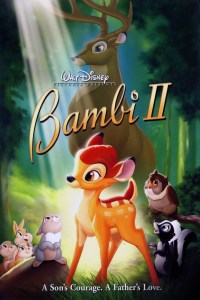 Bambi II (2006)
Bambi II (2006)
Definitely one of the better Disney ‘sequels.’ One thing that sets it apart is that it is a midquel that actually expands on plot and character points that needed to be expanded on. My ‘Worst’ when I reviewed the original film was how jarring the scene change was from Bambi’s mother’s death to twitterpated songbirds. So Bambi II explores the time period between the Great Prince taking on the care of his son & Bambi reemerging as an adult buck. The characters are also expanded upon – most obviously Faline, the Great Prince, and Ronno (the rival buck that fights Bambi over Faline). Buuuut. One little problem. The original movie was made in 1942. A lot has changed in 60+ years.
THE BEST:
- As far as the D2DVD sequels go, this movie looks really good. Bambi is (I would hazard to say OBJECTIVELY) one of the most beautiful films in the Disney Canon, so its distant sequel had a lot to live up to. The film has stunningly beautiful backgrounds, and the characters are perfectly on-model. You can tell that the film had a decent budget and, judging from the “Walt Disney Pictures Presents” thing in the title credits, this was meant as a ‘prestige’ D2DVD sequel (if there is such a thing.) It still looks different from the original film, but that is inevitable thanks to the advancement of digital painting and CGI and whatnot. No multiplane cameras here. I have one niggling nitpicky point about the visuals that I must expand on because it’s my bloggy and I’ll rant if I want to – they kept doing animations of Northern Cardinals flying artfully in flocks, and having both birds in a pair be red. Nope. Female Northern Cardinals are brown (though they’re beautiful in their own right) and Northern Cardinals in general are VERY territorial. They hang out with their mates and that’s it. …Though I suppose the male-male pair in the film could have been gay. That’s actually kind of adorable, now that I think about it. Why yes, I DO like birds.
THE WORST:
- The score for the film is quite nice, but whoever made the decision to have a soundtrack be nothing but country-pop songs performed by female vocalists had strange ideas. This was an incredibly baffling choice, as the songs didn’t really suit the setting at all, and dated it severely. I hear that vocal style and instantly think “2000s”, which is jarring for a sequel to a film from 1942. Bambi‘s music complemented its setting, and especially in the case of Little April Shower, almost had an effect of being part of the forest, rather than the sappy montages that the songs were used for this film. I generally like Bambi II, but I really do not like the musical montages at all. If they had to go with montages, they should have gone for a choral or folk sound, not a contemporary country-pop sound.
See Also: Bambi
Okay, so, for the first time, I’m reviewing a film I didn’t watch all the way through. I was trying to force myself to get through it (as regular readers know, I AM NOT A FAN OF THE FOX AND THE HOUND). I crashed out with 10 minutes left in the film, then I developed bronchitis, and finally I just decided, to hell with it, let’s just get this review over with. All in all, I think I preferred the phlegm from my bronchitis to this disaster of a midquel. Tod and Copper go to a county fair, Copper starts singing along with this touring country band made up of stray dogs (and Copper lies about being a stray so he can stay in the band), the ‘Singin’ Strays’ are led by a mutt played by Patrick Swayze (who…wasn’t a country singer, but okay), a prima donna dog played by Reba McEntire gets all jealous, and Tod also gets all jealous since Copper has abandoned him. Meanwhile, the specter of the original film’s downer ending hangs over this midquel that tries to pretend the title characters stayed friends forever, while still foreshadowing their ‘breakup’ at the same time. The plot of this movie is even more asinine than my brief summary. I don’t know why in heaven’s name this thing had to exist. I mean, there are certainly worse midquels/sequels, but this one has the most WTF plot by far.
THE BEST:
- The animation was pretty good for direct-to-DVD standards (everyone’s on model, the colours are bright and happy, the backgrounds are nice), and the designs for the new characters were generally well done. The improved animation quality is likely because this was one of the last sequels released. I actually get the feeling that this was a prestige project for DisneyToons, since there is an entire soundtrack of original songs for this film. Again, I’m baffled.
THE WORST:
- If you’re not into country music, and I mean ACTUAL country, not pop crossover stuff like Faith Hill and Taylor Swift, you will hate this film. This movie is crammed full of twangin’ rootin’ tootin’ hollerin’ line dancin’ Achy Breaky Heart-in’ Grand Ole Opry music, and it assumes you’re already a fan of the genre. It’s already a tonal clash with The Fox and the Hound‘s soundtrack, and generally the incredibly upbeat mood of this midquel just feels…weird. I don’t hate country music, but I am certainly not enough of a fan of it to care about some goddamn stray dogs singing it. The Fox and the Hound 2 was just boring. But, I suppose “weird” and “boring” are an improvement for the utter bile and contempt I have for the original film. Welcome to the Disney Sequels, in which my standards could not be any lower.

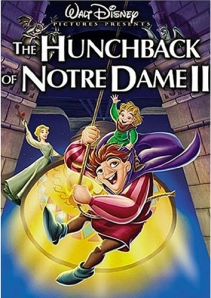
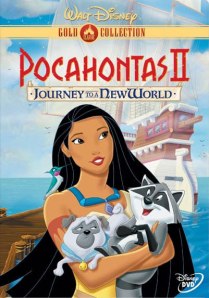
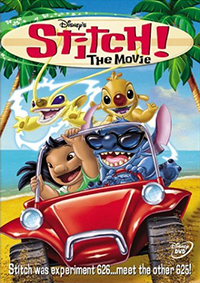
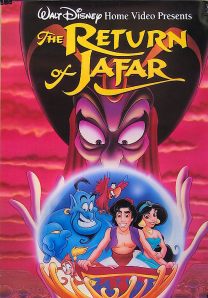
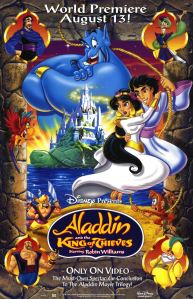
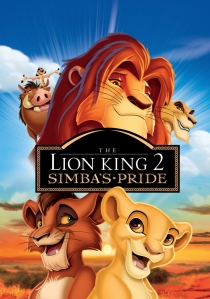
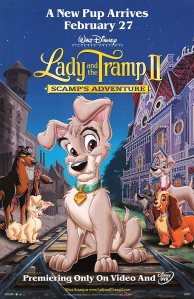
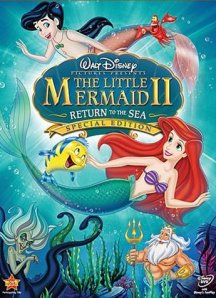
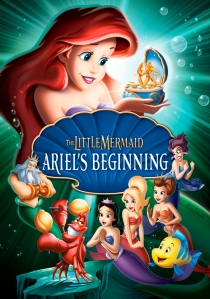
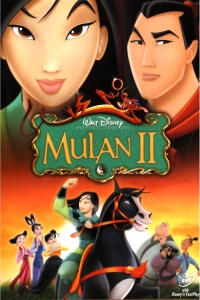
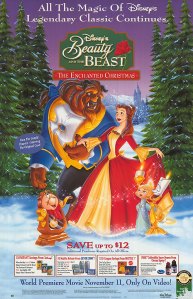
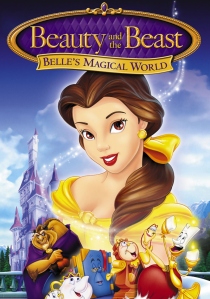
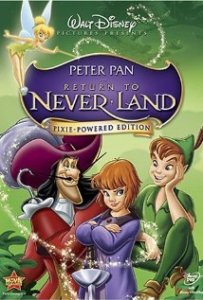
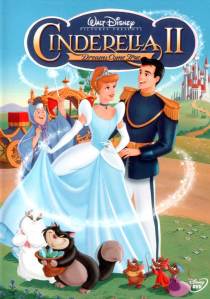
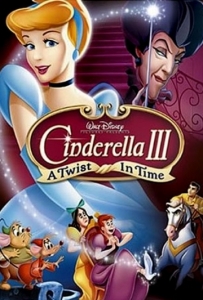
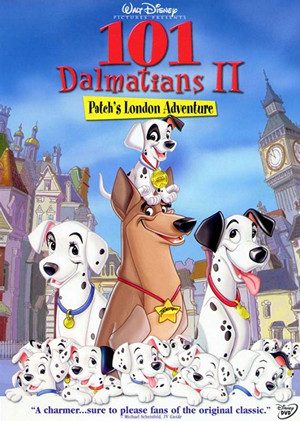
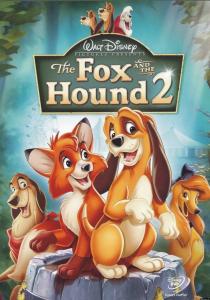
You must be logged in to post a comment.